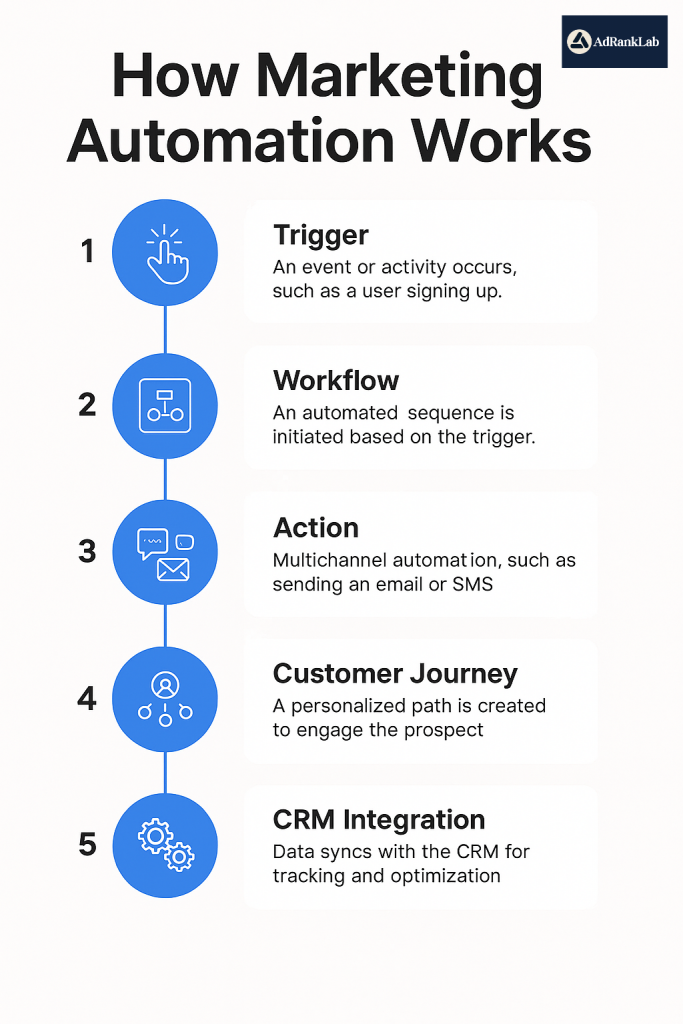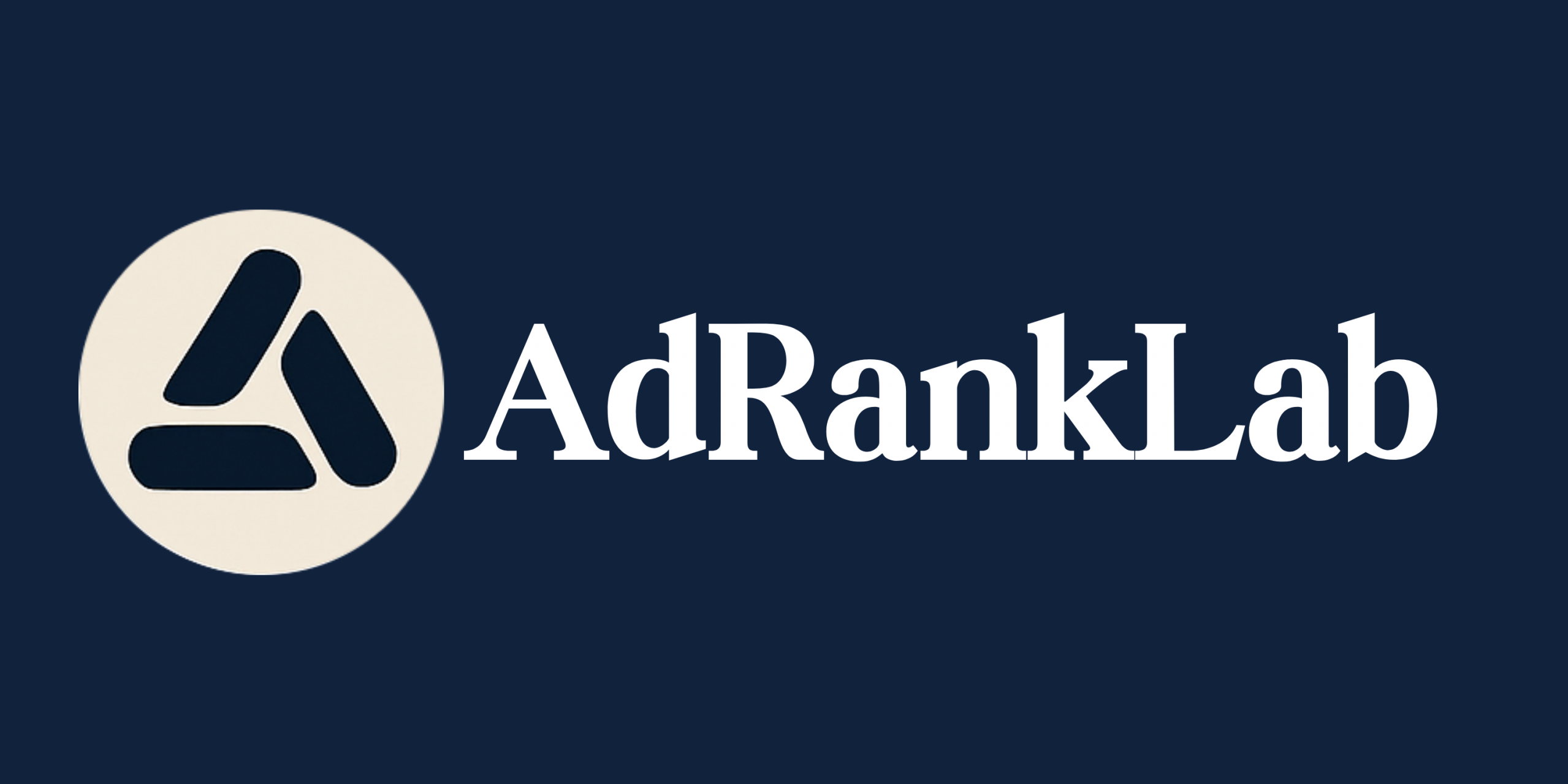In today’s hyper-competitive digital world, personalized customer experiences are no longer optional – they’re essential. That’s where marketing automation comes in. In simple terms, marketing automation uses technology to streamline, automate, and measure marketing tasks and workflows. It helps businesses target the right people with the right message at the right time – without the constant need for manual effort.
As we move deeper into 2025, automation isn’t just a luxury; it’s a necessity for businesses aiming to scale efficiently while maintaining a personal touch. According to a 2024 report by Statista, the global marketing automation market is projected to reach $8.42 billion by 2025, growing at a CAGR of 9.8% from 2022 to 2025.
What is Marketing Automation?

Marketing automation is the use of software to automate repetitive marketing activities such as email marketing, social media posting, ad campaigns, and more. The goal? To nurture leads, boost conversions, and maximize ROI.
Purpose and Evolution
Initially limited to email campaigns, marketing automation has evolved into a sophisticated multichannel powerhouse. Today, it handles:
- Lead scoring
- Behavioral tracking
- Real-time customer journey orchestration
- CRM integration
How It Differs from Email Marketing or CRM
| Feature | Email Marketing | CRM | Marketing Automation |
|---|---|---|---|
| Primary Focus | Sending emails | Managing customer data | Automating entire marketing journeys |
| Personalization | Basic | Customer-centric | Deep, dynamic, multi-touch personalization |
| Integration | Standalone or light CRM | Mainly sales-oriented | Unified across sales, marketing, and support |
Email marketing tools simply send messages to lists. CRM systems store and organize customer data. Marketing automation bridges the gap, making intelligent decisions based on customer behavior and preferences.
How Marketing Automation Works
Marketing automation operates through a system of triggers, workflows, and customer journey mapping:
- Trigger: A user action like form submission or email open
- Workflow: A sequence of automated responses (emails, SMS, chatbot messages, CRM tasks)
- Journey Mapping: Creating experiences across multiple channels that adapt to user behavior
Channels Supported in 2025:
- Email automation
- SMS sequences
- Social media scheduling & DMs
- Chatbots & conversational marketing
- CRM task automation
- AI-based recommendations on websites
- WhatsApp & Messenger integrations
A 2025 Gartner study found that 76% of marketers using multichannel automation saw an improvement in customer satisfaction and retention.
Key Benefits of Marketing Automation
- Lead Nurturing: Automatically guide leads through the funnel with personalized content
- Higher Conversions: Right message at the right time = better results
- Efficiency & Cost Savings: Reduce human error and time waste
- Boosted ROI: Personalization and segmentation lead to better engagement and lower CAC (Customer Acquisition Cost)
Key Stats:
- According to Invesp, companies using marketing automation see a 14.5% increase in sales productivity and a 12.2% reduction in marketing overhead.
- Epsilon research shows that 80% of consumers are more likely to purchase from a brand that provides personalized experiences.
Real-World Examples
B2B Example: SaaS companies like HubSpot use lead scoring and drip campaigns to educate prospects before connecting them with a sales rep. For instance, an onboarding sequence might include:
- Day 1: Welcome email with account setup guide
- Day 3: Video tutorial on key features
- Day 7: Case study from similar company
- Day 14: Invite to schedule a demo
E-commerce Example: Amazon and Shopify-based brands use automated cart abandonment flows that remind customers of their unpurchased items and offer limited-time discounts. These campaigns typically result in a 15% average recovery rate.
SaaS Example: Companies like Asana use trial-based automation to guide new users with tooltips, feature highlights, and progress tracking. This leads to a 30-40% increase in trial-to-paid conversions.
B2C Retail Example: Beauty brands automate personalized product recommendations post-purchase to upsell complementary items, increasing average order value by up to 20%.
Top Marketing Automation Tools in 2025
| Tool | Best For | Key Features | Pricing (Approx.) |
| HubSpot | All-in-one solution | CRM, email, landing pages, analytics | Starts at $50/month |
| ActiveCampaign | Small to mid-sized businesses | Advanced automation, personalization, CRM integration | From $39/month |
| Mailchimp | Startups & small teams | Email marketing, basic automation, design tools | Free up to 500 contacts |
| Instantly.ai | Cold email outreach | AI personalization, multichannel drip campaigns | From $30/month |
| Lemlist | B2B outreach | Email warmup, personalized image/video | $59/month and up |
| Zapier | Workflow automation | Connects 5000+ apps for custom automations | Free plan available, Paid starts at $19.99/month |
2025 Trends:
- Increased adoption of AI-powered automation
- Voice assistant integration
- Visual workflow builders
- Privacy-first personalization (zero-party data use)
Is Marketing Automation Right for Your Business?
Use Cases by Business Type:
- B2B: Lead scoring, webinar follow-ups, sales CRM sync
- B2C/E-commerce: Product recommendations, cart recovery, re-engagement
- Startups: Onboarding automation, limited-time offer promotions
- Agencies: White-label automation services for clients
- Healthcare Providers: Patient follow-ups, reminders, appointment scheduling
When to Start?
If you’re generating leads or have more than 50 customers/subscribers, it’s time to automate. Businesses waiting too long often lose valuable time that could have been spent scaling intelligently.
Common Mistakes to Avoid
- Over-automation: Leads to robotic, impersonal messages
- Poor Segmentation: Sending the same message to everyone kills engagement
- No A/B Testing: Optimization depends on data, not assumptions
- Neglecting Analytics: Without reviewing data, improvements become guesswork
- Skipping Human Touch: Automation should assist, not replace, human connection
According to Ascend2, 51% of marketers say that integration and complexity are their biggest challenges with automation. Keeping it simple and aligned with your goals is key.
Conclusion
Marketing automation in 2025 is smarter, more powerful, and more necessary than ever. Whether you’re a SaaS founder, an e-commerce entrepreneur, or a corporate marketer, automation can elevate your growth without draining your resources.
Done right, it increases revenue, saves time, and provides customers with a superior experience. Don’t wait for your competitors to get ahead.
FAQs
Q: What is marketing automation in digital marketing?
A: It’s the use of software to automate and personalize marketing workflows across channels like email, SMS, and social media.
Q: What are the top marketing automation tools in 2025?
A: HubSpot, ActiveCampaign, Mailchimp, Instantly.ai, Lemlist, and Zapier.
Q: What is the difference between CRM and marketing automation?
A: CRM manages customer data and sales processes, while marketing automation handles lead nurturing and personalized engagement.
Q: How does marketing automation improve ROI?
A: Through better segmentation, personalization, lead nurturing, and reduced marketing overhead, companies see measurable gains in revenue.




3 thoughts on “What is Marketing Automation? A Complete Beginner’s Guide to Smarter Marketing in 2025”